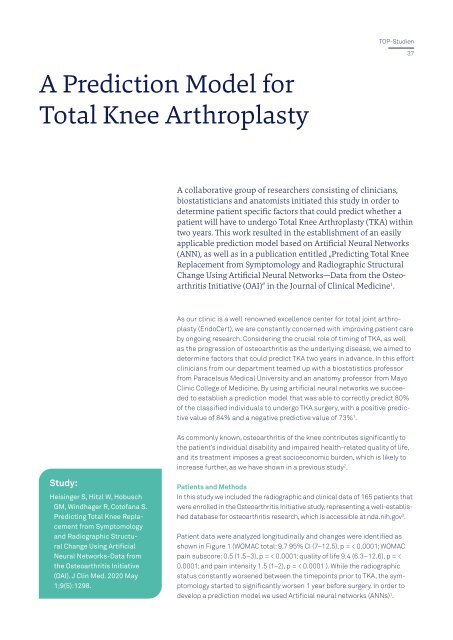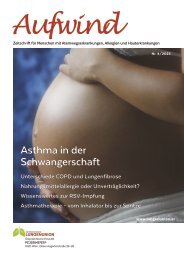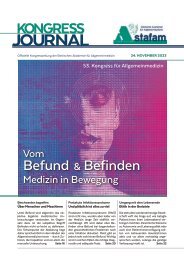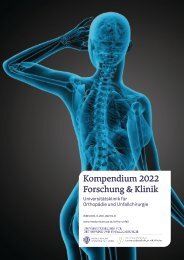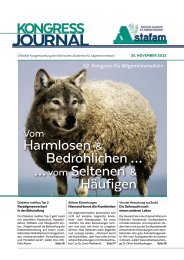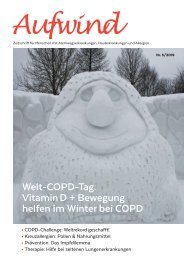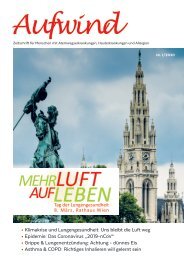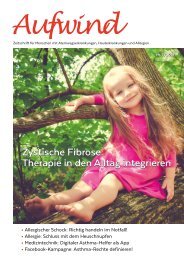Kompendium 2020 Forschung & Klinik
Das Kompendium 2020 der Universitätsklinik für Orthopädie und Unfallchirurgie von MedUni Wien und AKH Wien (o. Univ.-Prof. R. Windhager) stellt einen umfassenden Überblick über die medizinsichen Leistungen und auch die umfangreichen Forschungsfelder dar. Die Veröffentlichungen zeigen die klinische Relevanz und innovative Ansätze der einzelnen Forschungsrichtungen. Herausgeber: Universitätsklinik für Orthopädie und Unfallchirurgie MedUni Wien und AKH Wien Prof. Dr. R. Windhager ISBN 978-3-200-07715-7
Das Kompendium 2020 der Universitätsklinik für Orthopädie und Unfallchirurgie von MedUni Wien und AKH Wien (o. Univ.-Prof. R. Windhager) stellt einen umfassenden Überblick über die medizinsichen Leistungen und auch die umfangreichen Forschungsfelder dar. Die Veröffentlichungen zeigen die klinische Relevanz und innovative Ansätze der einzelnen Forschungsrichtungen.
Herausgeber: Universitätsklinik für Orthopädie und Unfallchirurgie
MedUni Wien und AKH Wien
Prof. Dr. R. Windhager
ISBN 978-3-200-07715-7
Create successful ePaper yourself
Turn your PDF publications into a flip-book with our unique Google optimized e-Paper software.
TOP-Studien<br />
37<br />
A Prediction Model for<br />
Total Knee Arthroplasty<br />
A collaborative group of researchers consisting of clinicians,<br />
biostatisticians and anatomists initiated this study in order to<br />
determine patient specific factors that could predict whether a<br />
patient will have to undergo Total Knee Arthroplasty (TKA) within<br />
two years. This work resulted in the establishment of an easily<br />
applicable prediction model based on Artificial Neural Networks<br />
(ANN), as well as in a publication entitled „Predicting Total Knee<br />
Replacement from Symptomology and Radiographic Structural<br />
Change Using Artificial Neural Networks—Data from the Osteoarthritis<br />
Initiative (OAI)“ in the Journal of Clinical Medicine 1 .<br />
As our clinic is a well renowned excellence center for total joint arthroplasty<br />
(EndoCert), we are constantly concerned with improving patient care<br />
by ongoing research. Considering the crucial role of timing of TKA, as well<br />
as the progression of osteoarthritis as the underlying disease, we aimed to<br />
determine factors that could predict TKA two years in advance. In this effort<br />
clinicians from our department teamed up with a biostatistics professor<br />
from Paracelsus Medical University and an anatomy professor from Mayo<br />
Clinic College of Medicine. By using artificial neural networks we succeeded<br />
to establish a prediction model that was able to correctly predict 80%<br />
of the classified individuals to undergo TKA surgery, with a positive predictive<br />
value of 84% and a negative predictive value of 73% 1 .<br />
As commonly known, osteoarthritis of the knee contributes significantly to<br />
the patient’s individual disability and impaired health-related quality of life,<br />
and its treatment imposes a great socioeconomic burden, which is likely to<br />
increase further, as we have shown in a previous study 2 .<br />
Study:<br />
Heisinger S, Hitzl W, Hobusch<br />
GM, Windhager R, Cotofana S.<br />
Predicting Total Knee Replacement<br />
from Symptomology<br />
and Radiographic Structural<br />
Change Using Artificial<br />
Neural Networks-Data from<br />
the Osteoarthritis Initiative<br />
(OAI). J Clin Med. <strong>2020</strong> May<br />
1;9(5):1298.<br />
Patients and Methods<br />
In this study we included the radiographic and clinical data of 165 patients that<br />
were enrolled in the Osteoarthritis Initiative study, representing a well-established<br />
database for osteoarthritis research, which is accessible at nda.nih.gov 3 .<br />
Patient data were analyzed longitudinally and changes were identified as<br />
shown in Figure 1 (WOMAC total: 9.7 95% CI (7–12.5), p = < 0.0001; WOMAC<br />
pain subscore: 0.5 (1.5–3), p = < 0.0001; quality of life 9.4 (6.3–12.6), p = <<br />
0.0001; and pain intensity 1.5 (1–2), p = < 0.0001 ). While the radiographic<br />
status constantly worsened between the timepoints prior to TKA, the symptomology<br />
started to significantly worsen 1 year before surgery. In order to<br />
develop a prediction model we used Artificial neural networks (ANNs) 1 .


